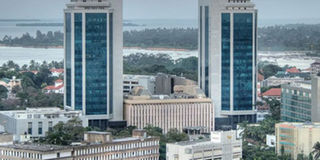Tanzania borrowers ‘pay the most’

What you need to know:
- The costs of loans in Tanzania has continued to remain high than any other countries in Sub-Saharan Africa at 17.50 per cent, than the regional average of 10.89 per cent.
Dar es Salaam. Tanzanian borrowers are paying the highest interest on loans from banks and financial institutions in sub-Saharan Africa, according to a new report.
The January 2019 consensus forecast Sub-Saharan Africa published last Friday by the Barlecona-based FocusEconomics says Tanzania has jumped from fourth highest in 2017 to the highest in 2018.
FocusEconomics is a leading provider of economic analysis and forecasts for 127 countries in Asia, Europe, Africa and the Americas.
The report shows that the interest rate for Tanzania is 17.50 per cent in 2018, followed by Ghana with 17.00 per cent. Angola is the third with 16.50 per cent while Nigeria and DRC follow with 15 per cent each.
Tanzania’s interest was also higher than the SSA regional average rates of 10.89 per cent in 2018 and 11.56 per cent recorded in 2017.
The rate was also higher than other East African member states of Kenya which has nine per cent in 2018, while Uganda has 9.88 per cent.
This is being experienced when the Bank of Tanzania (BoT) has used policy instruments to slow down costs of borrowing by reducing discount rates to single digit and offering short term loans to banks, which have lowered the inter-bank money market rate.
In 2017 Tanzania had the highest interest rate with 17.50 per cent, behind Mozambique, which was on top with 20.50 per cent, followed by Ghana and DRC, which have had 20 per cent each.
However, the report has shown that the country’s interest rates regime fell by 1.12 per cent between 2017 and 2018, although the change was lower than those experienced by Ghana, DRC, Angola and Mozambique.
The report is projecting Tanzania, next year Ghana will outshine Tanzania in 2019 and is expected to have an interest rate of 16.50 per cent, higher than Tanzania with 16.00 per cent.
In 2020, Tanzania will again take a lead as the report forecast shows that the interest rate will be 16.35 per cent while Ghana will lower to 15.92 per cent to become second.
According to the Bank of Tanzania, Tanzania is experiencing high interest rates because banks have been charging borrowers not because of the loan acquired, but also to cover their operational costs.
Speaking on December 10 this year, the governor of BoT Professor Florens Luoga called for banks to absorb their operational costs through services and products, instead of loans.
“We intend to enforce regulations immediately to ensure that operational costs of banks and financial institutions are not becoming a responsibility of consumers,” he was quoted by daily newspapers recently.
He said the central bank is going to set a cap on interest rates, but currently, the central bank has policy with the possibility of borrowers to dispute hiked rates.
However, in its monetary policy statement for June 2018, Bank of Tanzania has maintained that Interest rates will continue to be market determined.
“The Bank will however institute benchmark interest rate (the Central Bank Rate, CBR) under the interest rate based monetary policy framework, which is intended to guide short-term inter-bank lending rates and thereby influencing the marginal cost of funds for commercial banks,” reads part of the policy.
Further, the central bank says will continue to promote efficiency and transparency in the interbank cash market, which is a key avenue for transmitting monetary policy actions.
The policy, the BoT says is implemented to stimulate growth of credit to the private sector, which was at its record low and support the broader economic activities.


